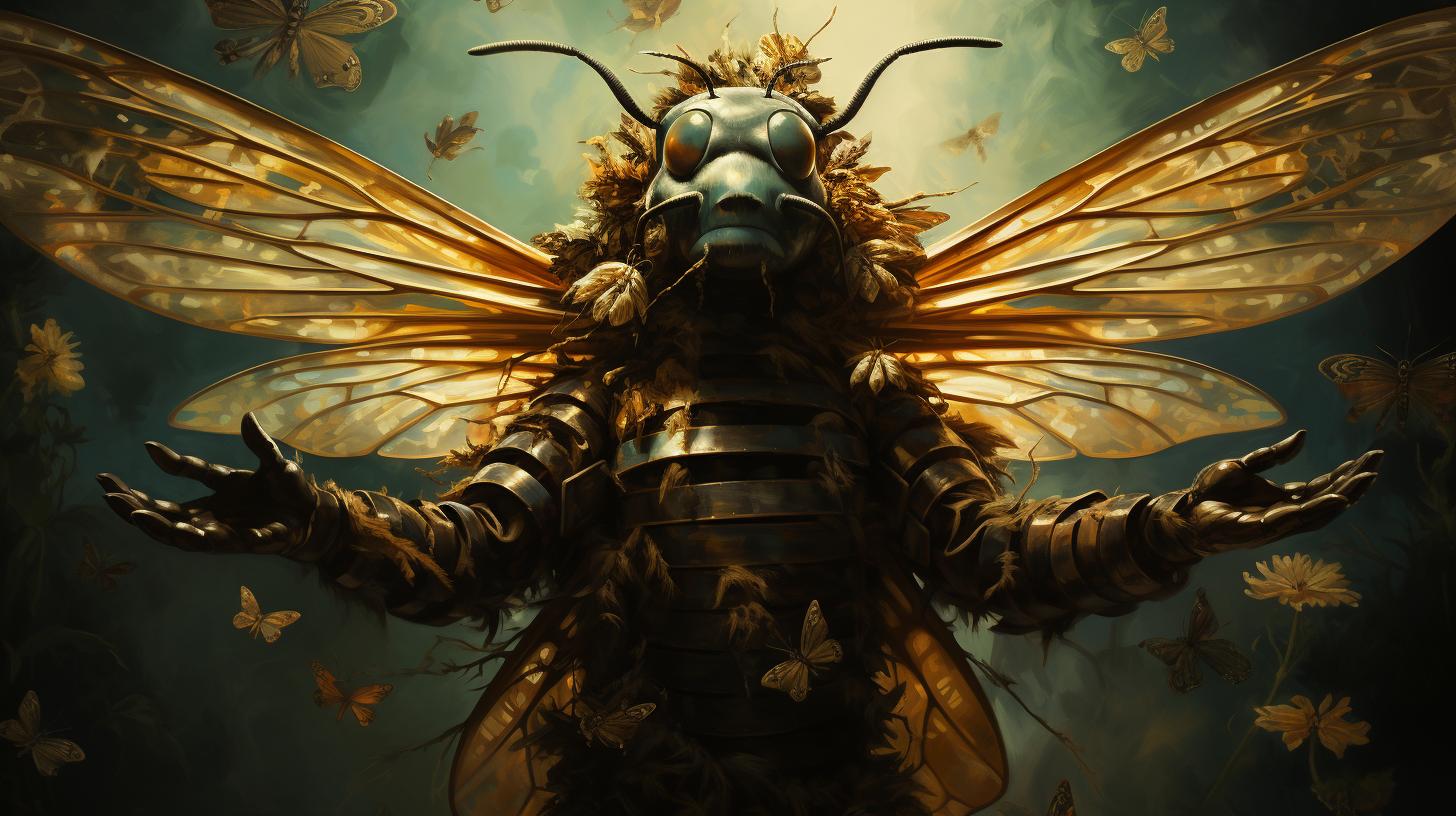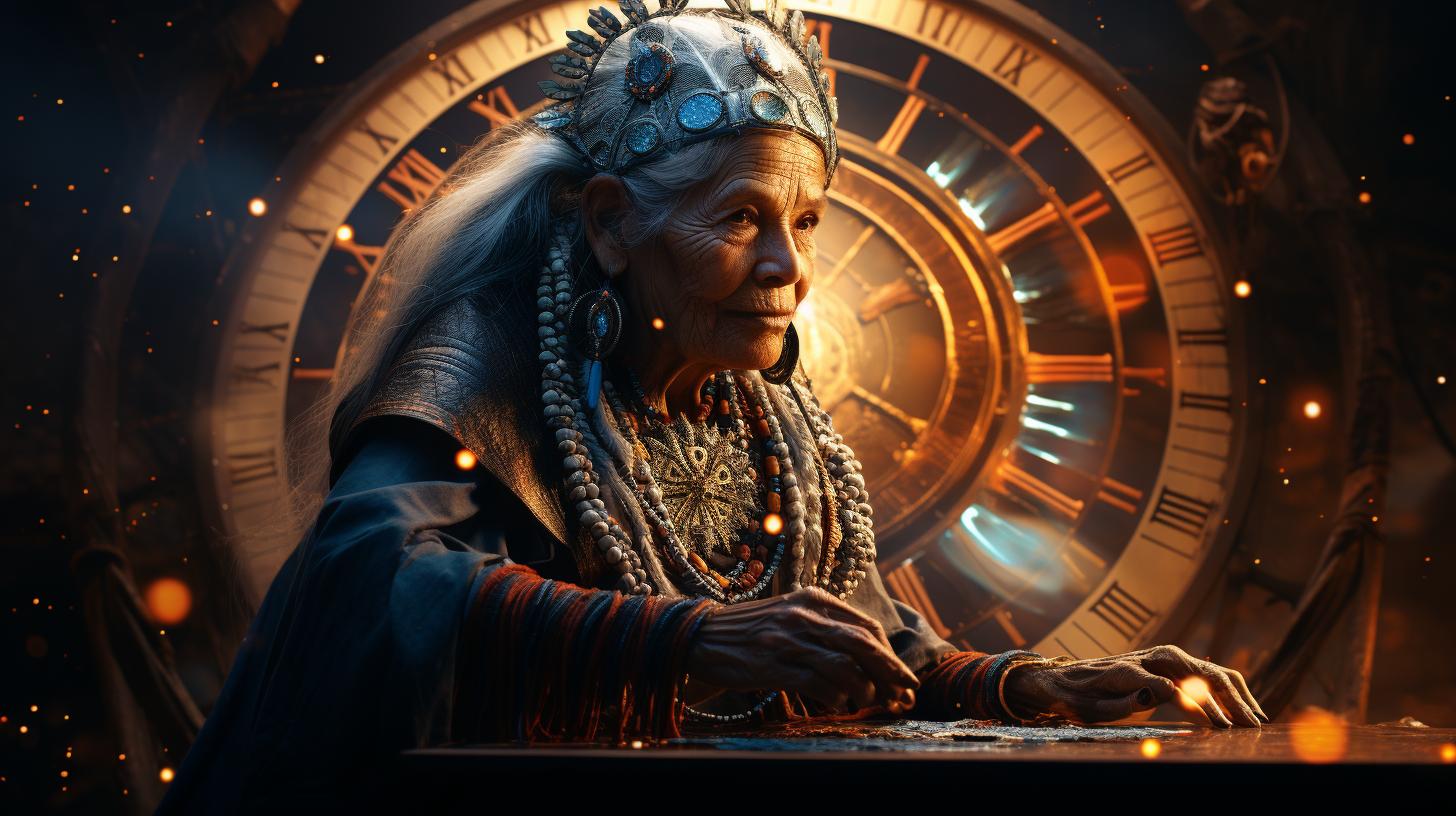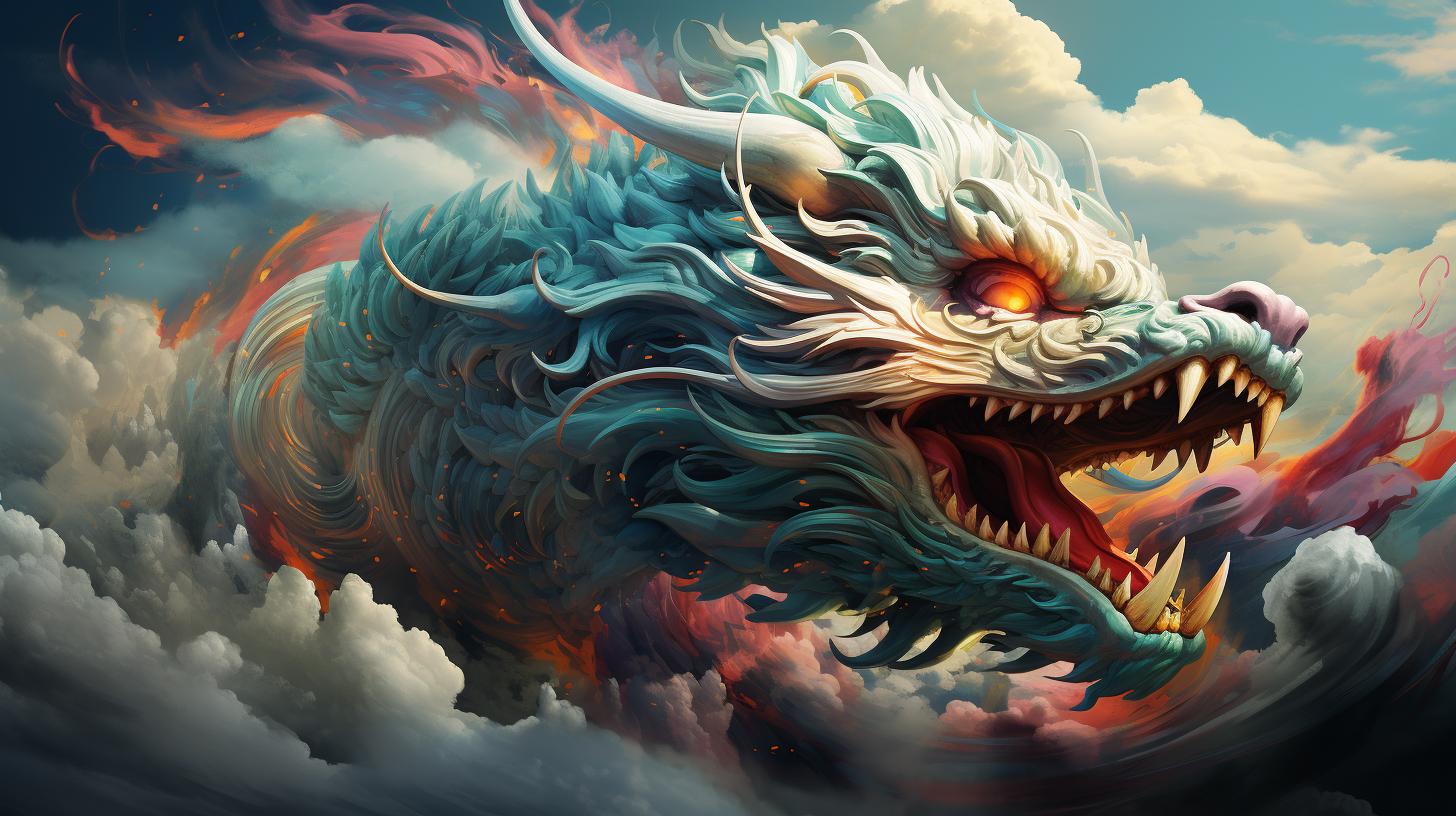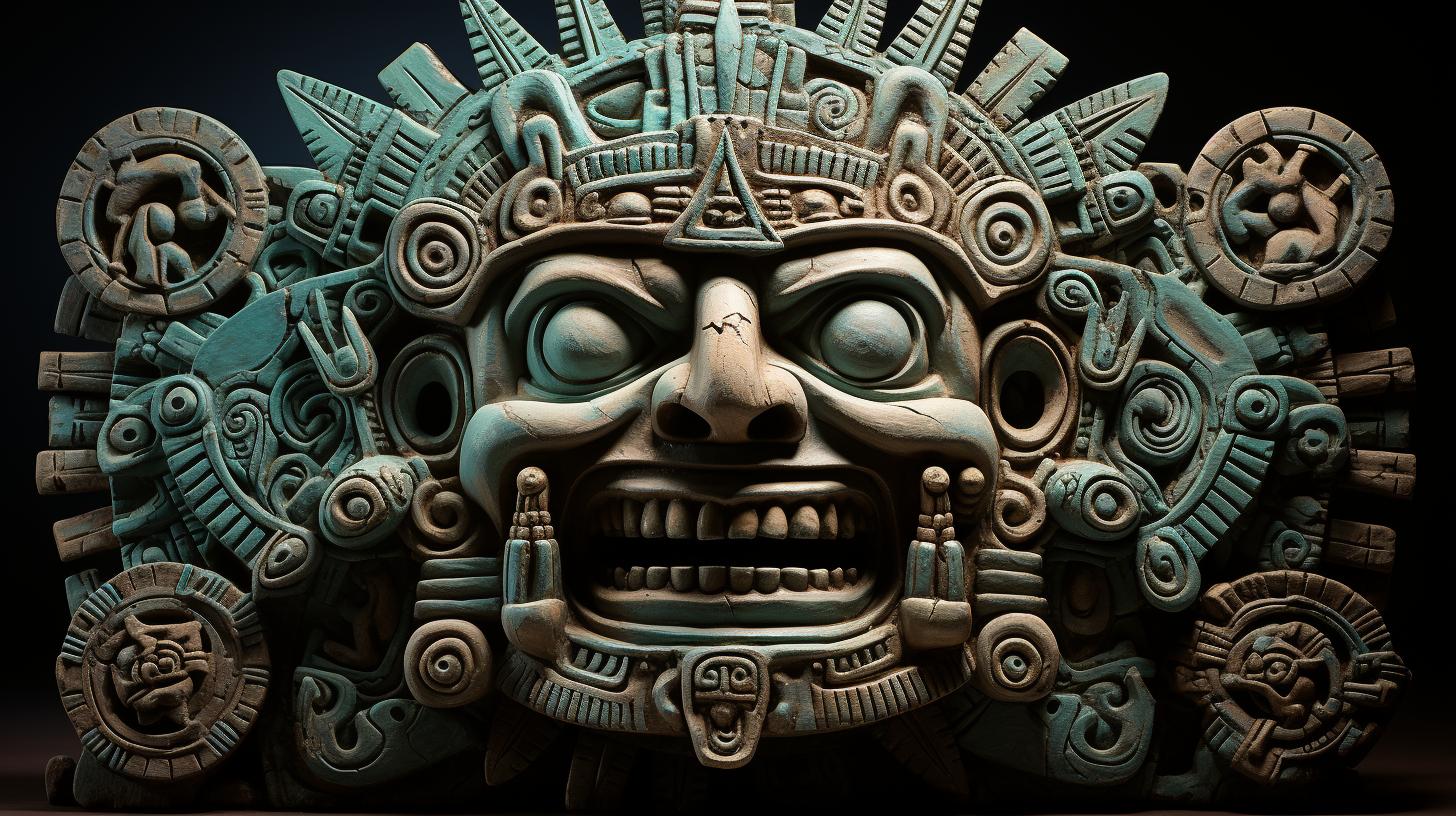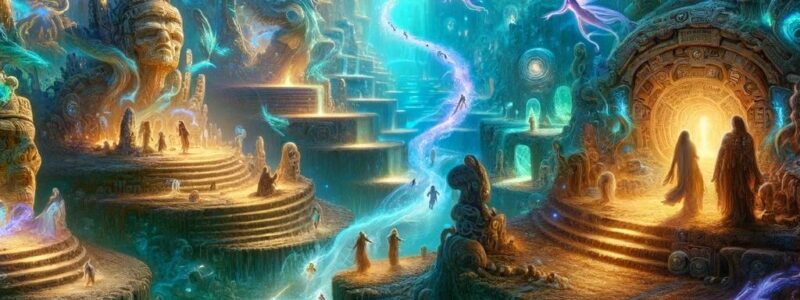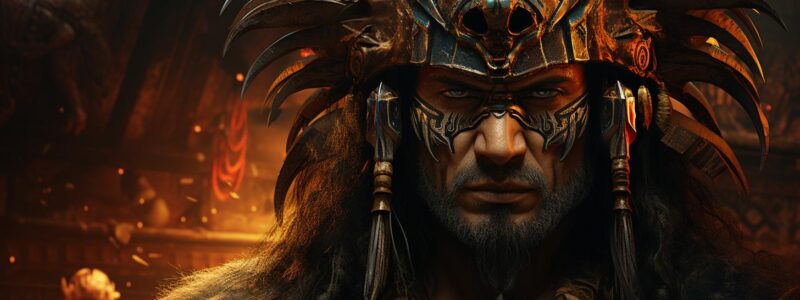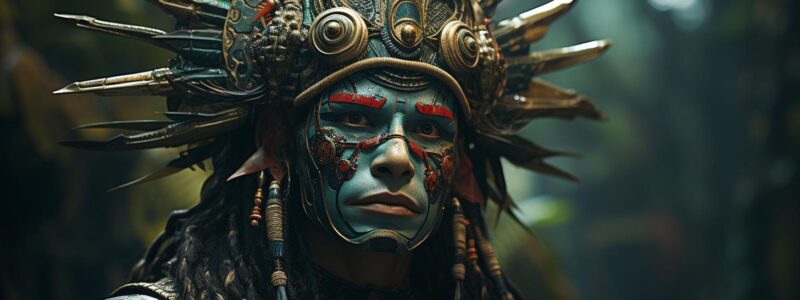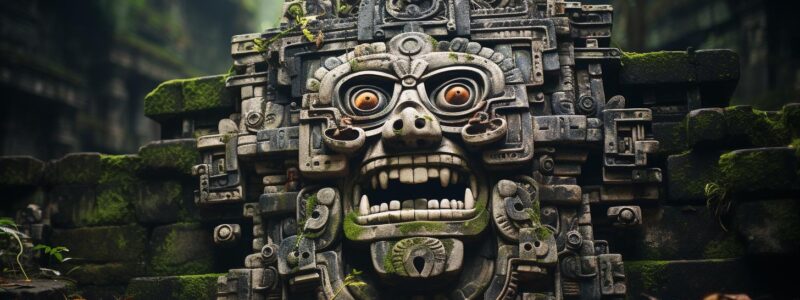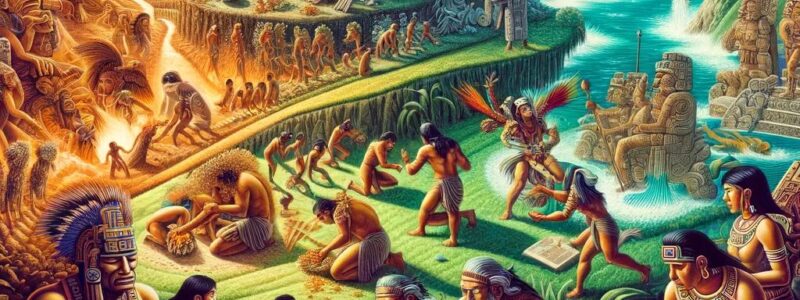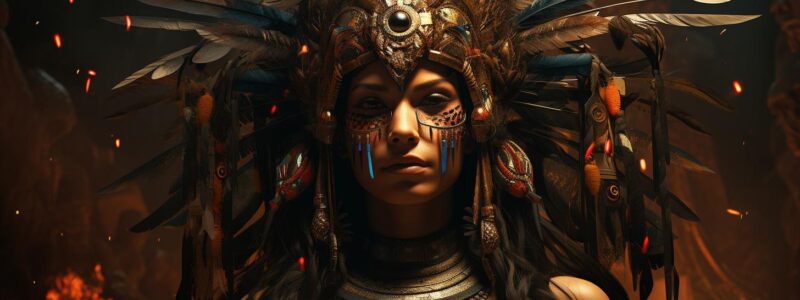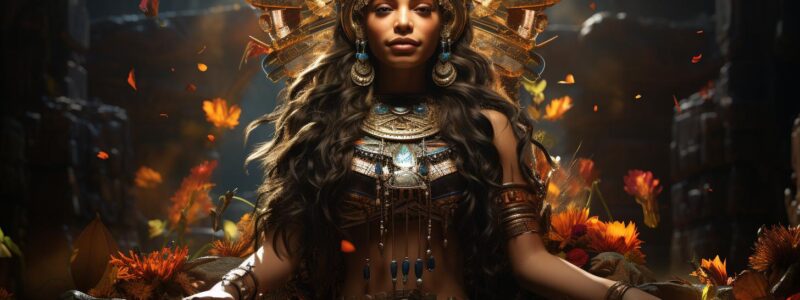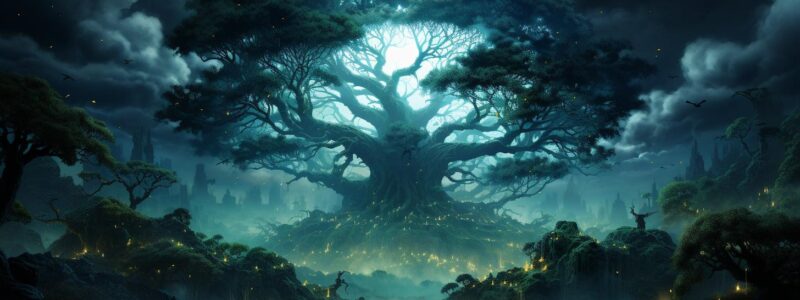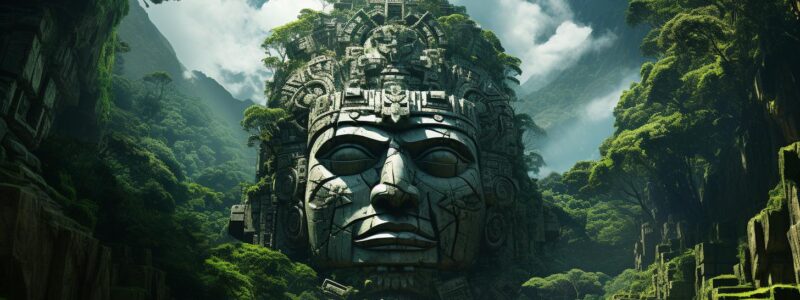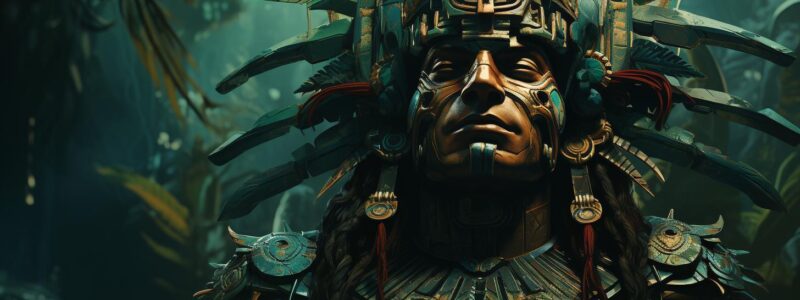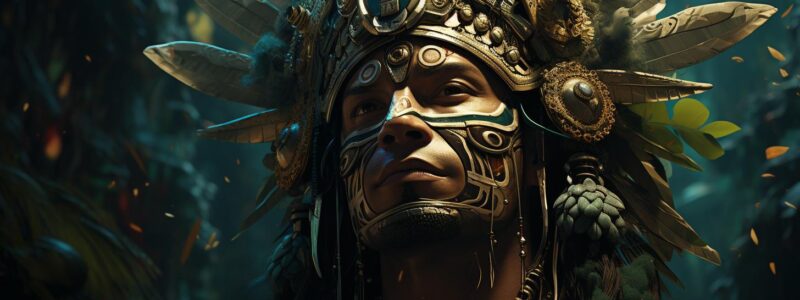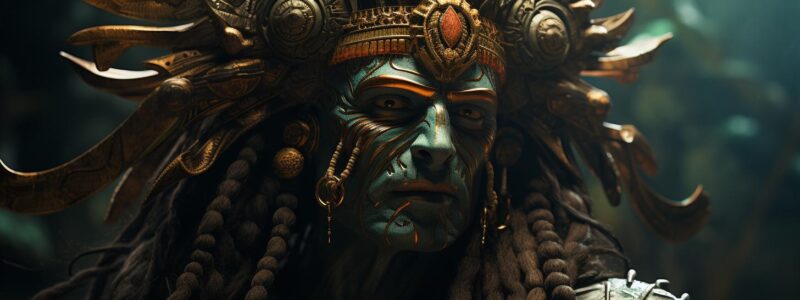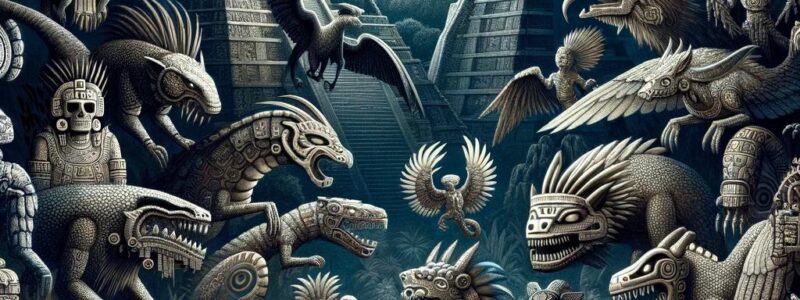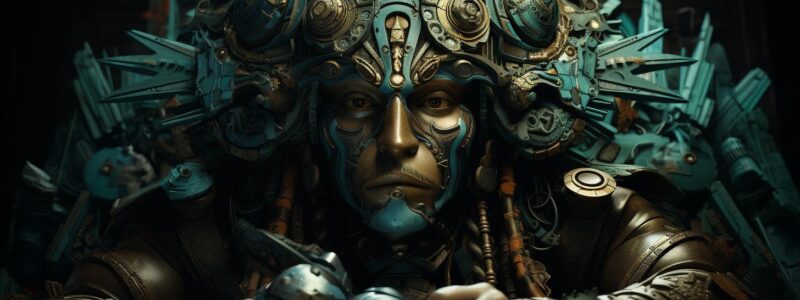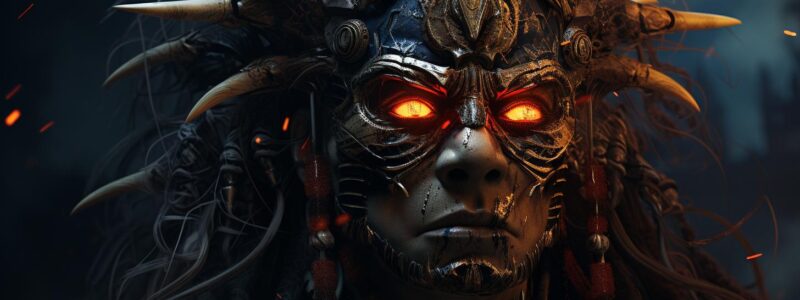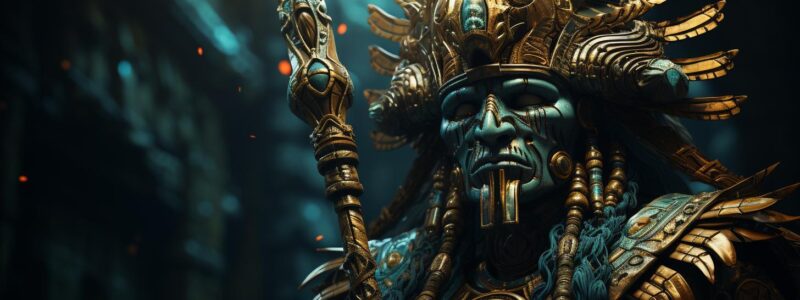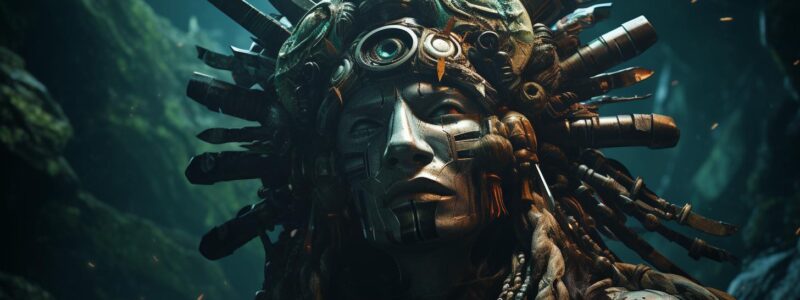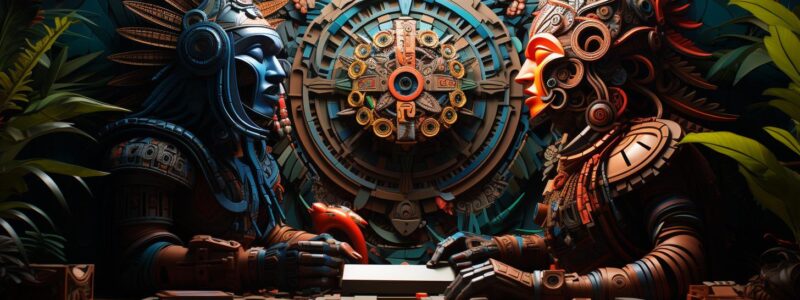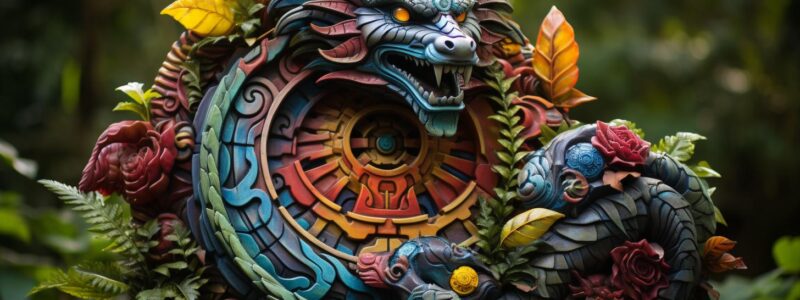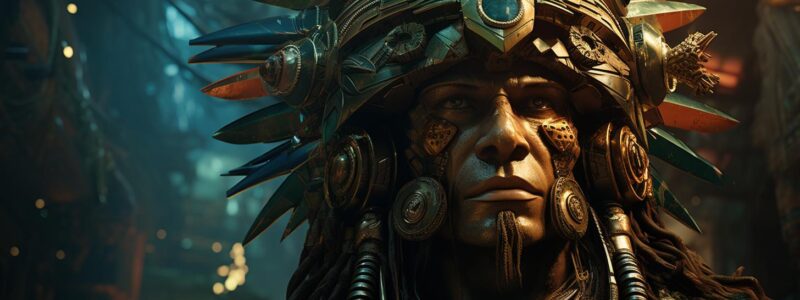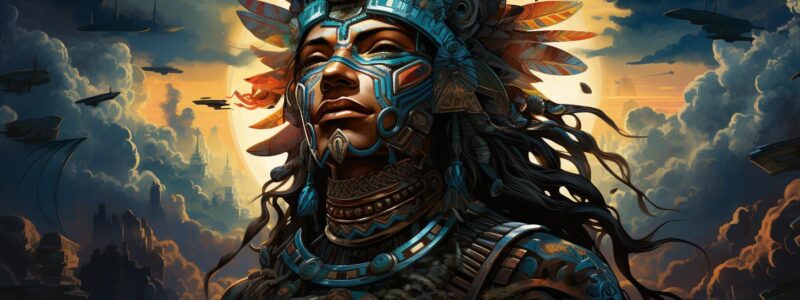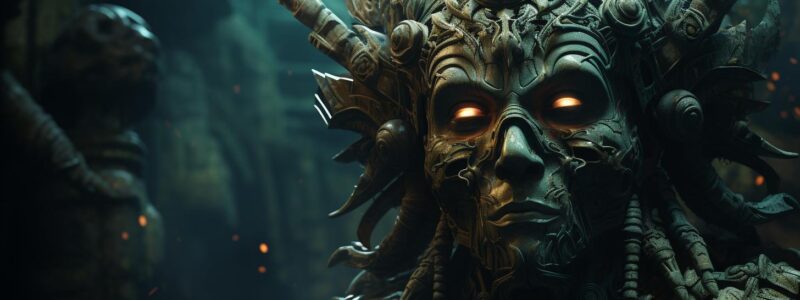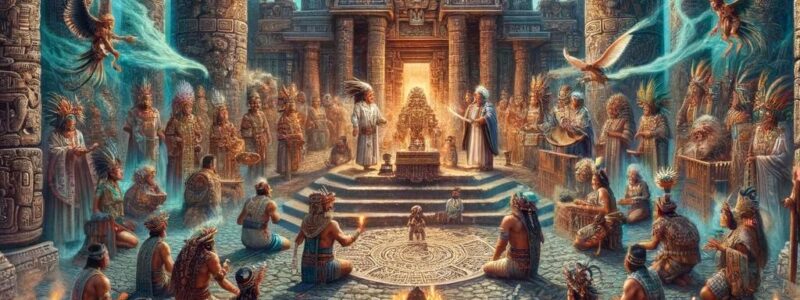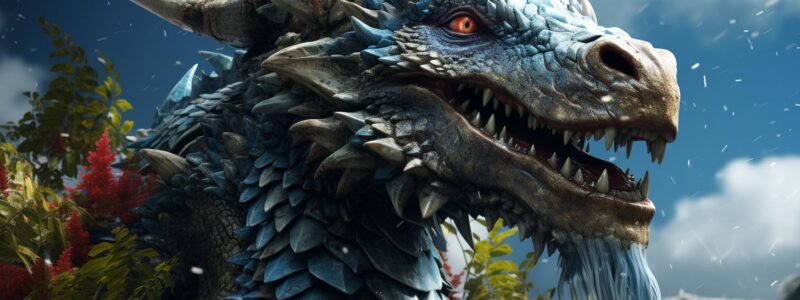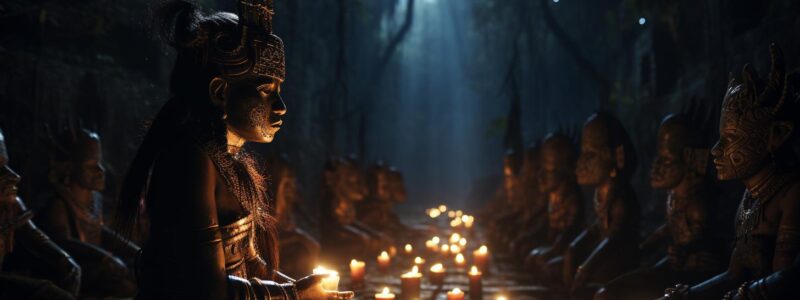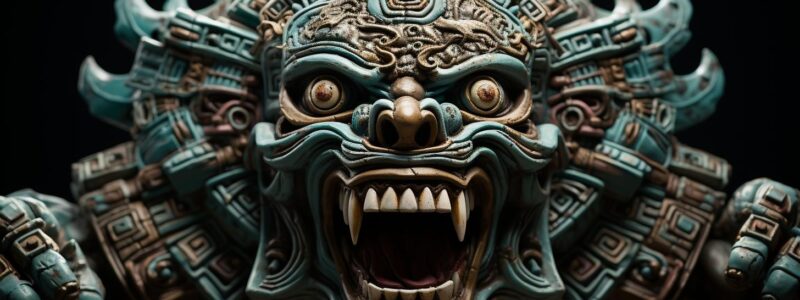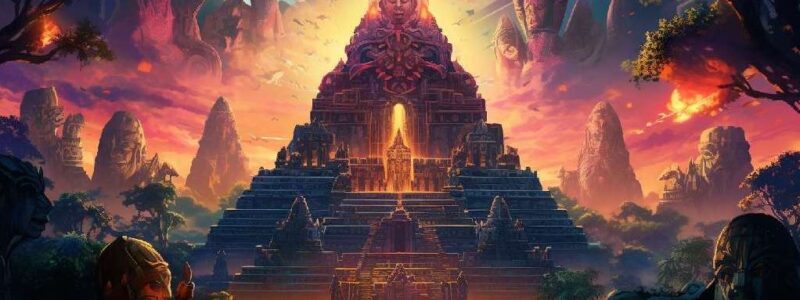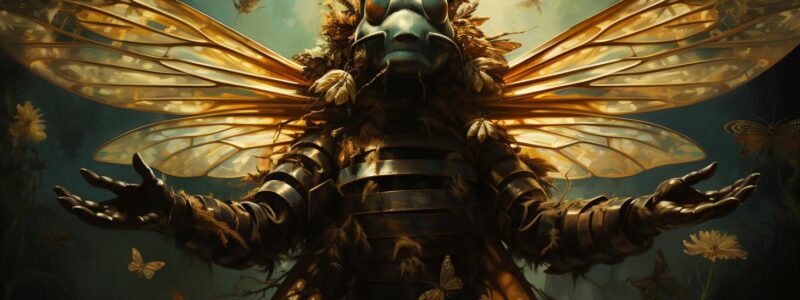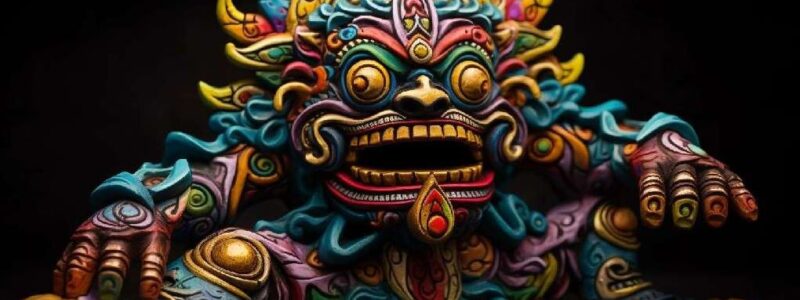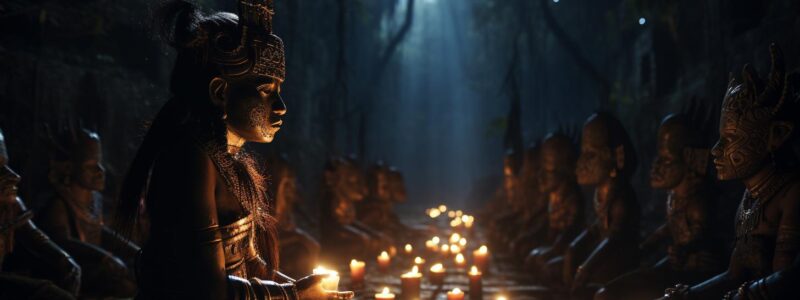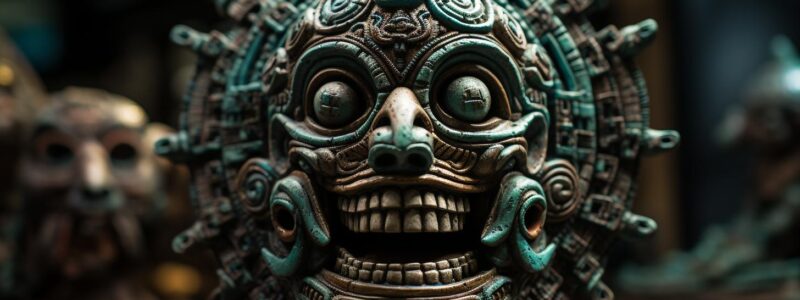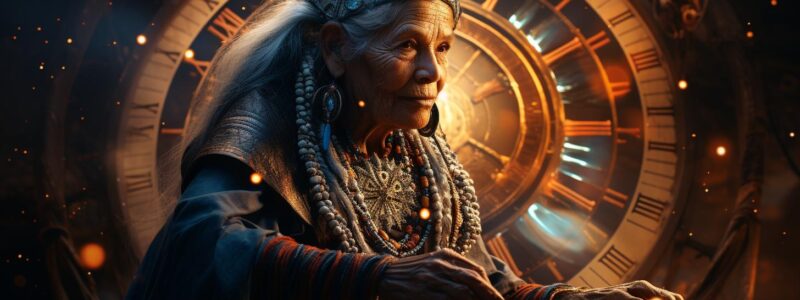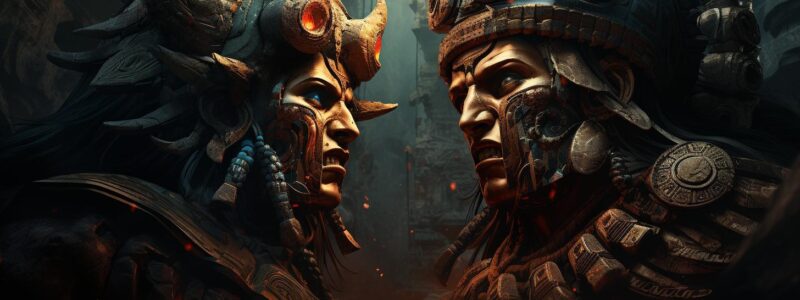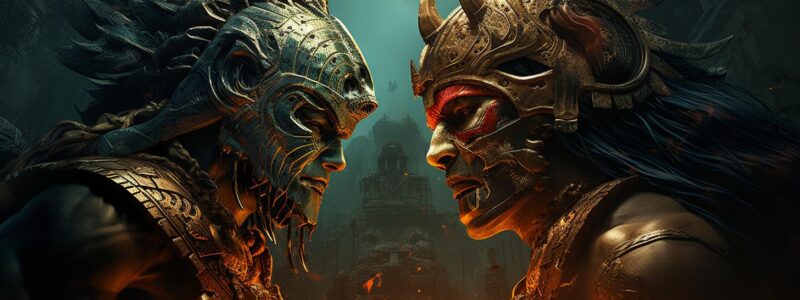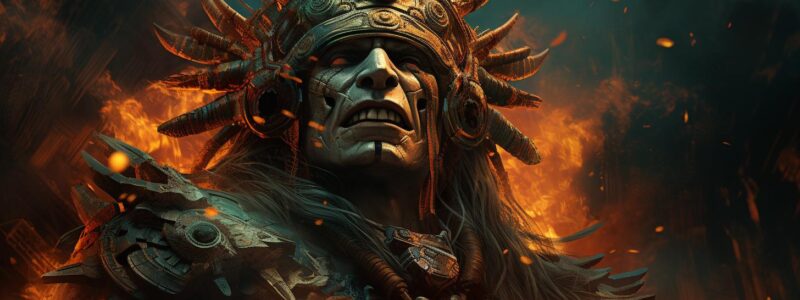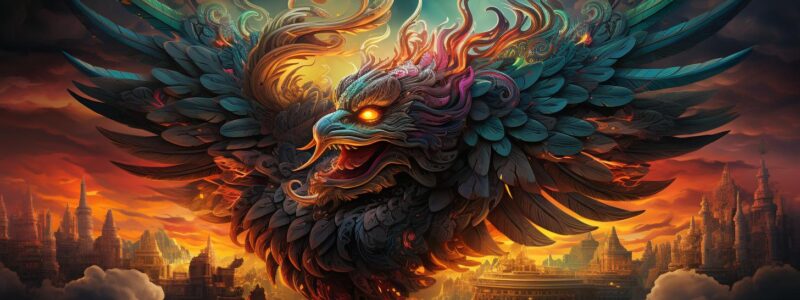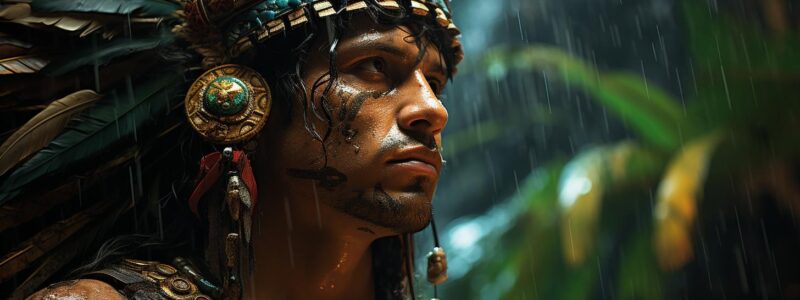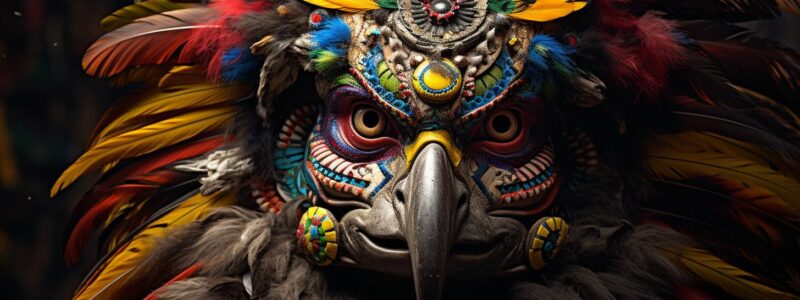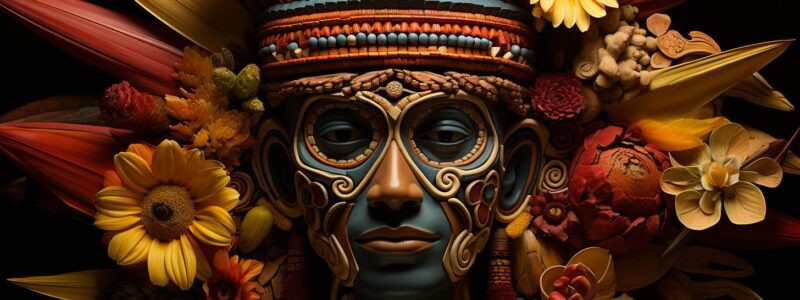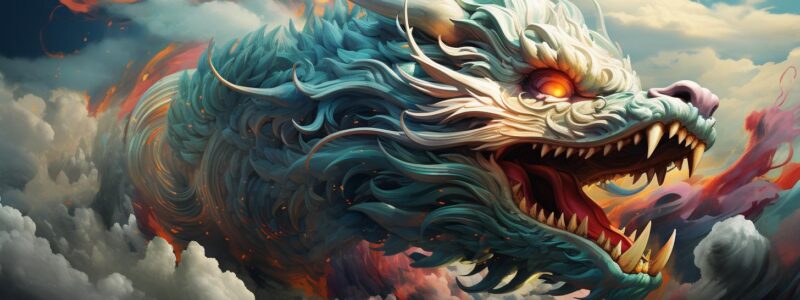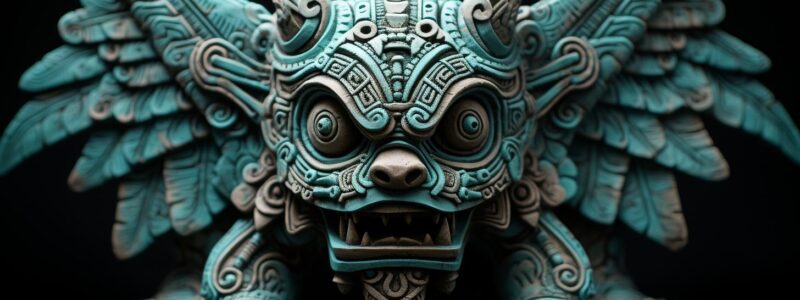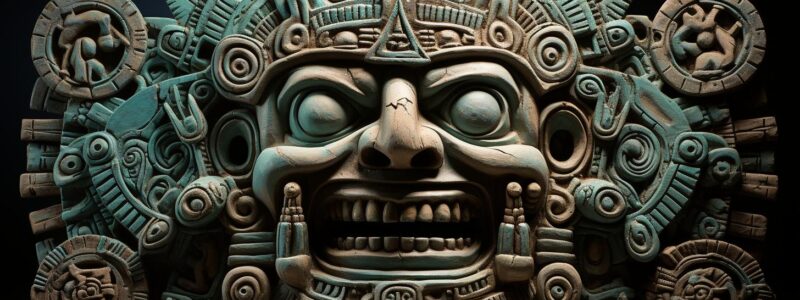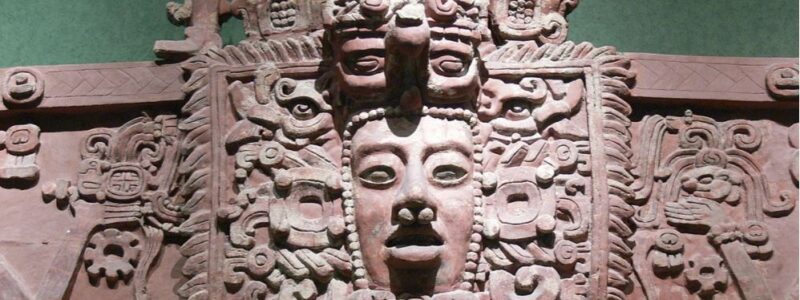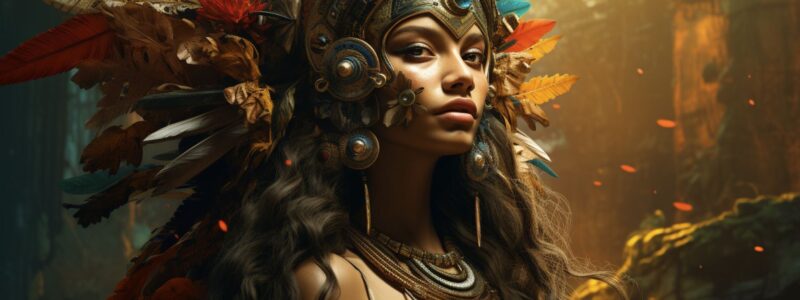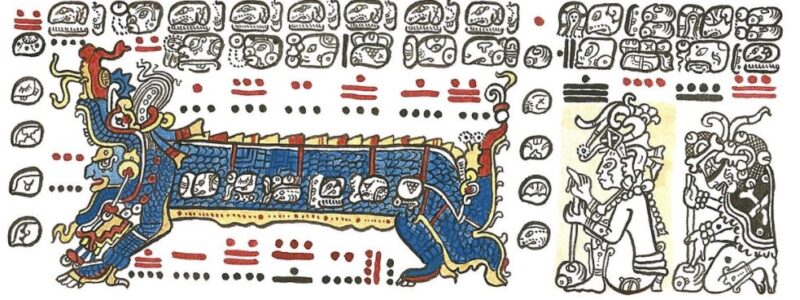All You Need To Know About The Ancient Mayan Gods and Goddesses
The ancient Mayan civilization believed in a complex pantheon of 166-250 gods and goddesses that played various roles in life. The world of the Mayans was composed of three parts: the Earth, Sky, and Underworld, with each part having its deities and unique qualities.
The culture and religion were spread across various regions. In this article, we’ll explore the ancient deities and their associated myths, as well as contemporary Maya spirituality and the legacy of the Maya pantheon in modern times.
The Creator Gods: Itzamna and Other Deities
The Mayan pantheon included a variety of creator gods that held significant roles in their stories and mythology. Among them was Itzamna, who was often referred to as the “father of the gods.”
According to ancient texts and carvings, Itzamna was the creator of the universe, responsible for the birth of the world and all that lived within it.
Itzamna, The Creator of the Universe
In Mayan mythology, Itzamna was believed to be the god of creation, artistry, and knowledge. He was often depicted as an aged man with a wrinkled face, but still possessing great power.
Itzamna‘s importance in Mayan religion extended beyond just the creation of the world; he was also considered to be the mediator between the gods and humanity. He was viewed as a wise teacher to the Mayan people, providing knowledge and guidance in all aspects of life.
Vucub Caquix and the Story of the Hero Twins Hunahpu and Xbalanque
Another story in Mayan mythology featuring a creator god was the legend of Vucub Caquix and the heroic twins Hunahpu and Xbalanque. Vucub Caquix was a bird demon who held himself to be a god, but in reality, he was just a mortal.
Hunahpu and Xbalanque, on the other hand, were the sons of the hero twins who defeated the bird demon. The twins played a crucial role in defeating evil and representing the values of Mayan culture.
Their story is considered to be one of the most well-known Mayan myths.
The Thirteen Creator Gods in the Popol Vuh
The Popol Vuh, a sacred text of Mayan religion, provides the names of thirteen creator gods who helped shape the world. These gods were seen as responsible for the creation of the universe, as well as the establishment of animal and plant life.
Some of these deities included Gucumatz, who was a serpentine deity thought to be in control of the sky, and Xmucane, who was regarded as the mother of the Maya people.
Overall, the creator gods were a significant part of Mayan religion. They were honored and respected by the Mayan people, who believed that they played a crucial role in the creation and maintenance of their world.
Each creator god had its own unique story and mythology, adding to the complexity of Mayan religion and culture.
The Gods of the Sky and Earth: Kinich Ahau, Hun Hunahpu and Others
The Mayan civilization worshipped a diverse pantheon of gods and goddesses associated with different aspects of life, with each category having its own unique deities. In this section, we will explore the gods of the Sky and Earth, including Kinich Ahau and Hun Hunahpu, as well as other deities associated with these two realms.
Kinich Ahau, The Sun God
Kinich Ahau was one of the most important deities in the Mayan pantheon, associated with the Sun and associated with rulership. He was often depicted as a man with jaguar-like features, holding a serpent in his hand.
Kinich Ahau was believed to traverse the sky each day, providing warmth, light, and energy to the world.
The Mayans believed that Kinich Ahau had two manifestations: the young Sun, associated with Spring, and the old Sun, associated with Summer. Each had its own rituals and ceremonies to honour the deity.
When the old Sun retired, the young Sun would take its place, marking the beginning of a new cycle and the celebration of new beginnings.
Hun Hunahpu, The Maize God of the Classic Maya
Hun Hunahpu was considered an essential deity for the survival of the Mayan civilization. He was associated with maize, the staple crop of the region and considered a powerful symbol of life.
Hun Hunahpu was often depicted as a young, robust man with a maize plant protruding from his head.
According to Mayan mythology, Hun Hunahpu and his brother were transformed into trees, which then bore maize. The roots of the trees reached the underworld, connecting the world of the living and the dead, making him instrumental in the Mayan cosmology and worldview.
Other Deities Associated with the Earth and Sky
There were several other deities associated with the Sky and Earth in Mayan religion. One of them was Chac, the god of rain and thunder, associated with the Sky. His counterpart was Yumil Kaxob, the god of cornfields, associated with the Earth, together they were believed to provide the necessary balance of rain and sunshine to ensure a successful harvest.
Another important deity was Huracán, the god of wind and storms, celebrated as one of the creator gods.
The Mayan gods and goddesses that represented the Sky and Earth reflected the importance of natural cycles and the fecundity of the land to the survival of the Mayan people. These deities were celebrated in ceremonies and rituals to ensure a bountiful harvest and a healthy, balanced world.
- Kinich Ahau was associated with the Sun and associated with rulership
- Hun Hunahpu was associated with maize, the staple crop of the region
- Chac was the god of rain and thunder while Yumil Kaxob the god of cornfields
- Huracán was the god of wind and storms, celebrated as one of the creator gods
The Underworld Deities: Ix Chel and Other Goddesses
The underworld was an essential part of Mayan cosmology, and its deities played significant roles in religious life.
Ix Chel was one of the most important underworld deities, often depicted as a woman wearing a serpent headdress and carrying a water jug. She was the goddess of fertility and childbirth and was associated with both the moon and water.
Ix Chel, The Moon Goddess of Fertility and Childbirth
Ix Chel was believed to have control over fertility and childbirth and was often called upon for safe delivery. Her association with the moon reflected her feminine qualities and was symbolized by the lunar cycle’s phases.
The moon’s waxing and waning were seen as a representation of the stages of pregnancy and childbirth. Ix Chel was also associated with weaving and other crafts. She was considered the patron of women and was worshiped in Mayan households by mothers and wives.
Other Underworld Deities and Their Associated Myths
Other underworld deities included Hunhau, the skeletal god of death, and the death god Ah Puch, who ruled over the souls of the deceased and the ninth level of the underworld, Xibalba.
The underworld was also home to owls, bats, and other nocturnal creatures, believed to be the companions of the underworld deities. Several myths explain the relationship between the Underworld and the living world.
The myth of the Hero Twins, Hunahpu and Xbalanque, is one of the most famous. In the story, the twins journey to the underworld after their father was killed and face a series of trials before defeating the death gods and returning to the world of the living.
In conclusion, the underworld deities of Mayan religion held significant power in the spiritual and everyday life of the ancient civilization. Ix Chel, the moon goddess of fertility and childbirth, was just one of the powerful and complex figures in Mayan cosmology, with other female deities playing equally important roles.
The underworld was home to other deities, each with their myths and symbols, and formed an integral part of the Maya’s understanding of the universe.
War and Agriculture: Chaac, Ah Puch and Other Gods
Mayan gods and goddesses were associated with various aspects of life, including war and agriculture. The deities from this category played important roles in the Mayan religion and were often depicted as supernatural beings with unique characteristics and powers.
This section discusses some of the most prominent gods associated with war and agriculture, including Chaac, Ah Puch, and other related deities.
Chaac, The God of Rain and Lightning
Chaac was the god of rain and lightning in Mayan mythology. He was believed to be a powerful deity that controlled the weather and was often depicted as a serpent with feathered headdresses.
Chaac was associated with water, fertility, and agriculture, and was highly revered in the culture. The Mayans believed that Chaac had the power to bring rain and to ensure the success of crops, and they would make offerings to him in exchange for his benevolence.
He was also known for his connection to the sky, the underworld, and the four cardinal directions.
Ah Puch, The God of Death and the Underworld
Ah Puch was the god of death and the underworld in Mayan mythology. He was often depicted as a skeletal figure with a skull-like face, and was associated with destruction, decay, and disease.
The Mayans believed that Ah Puch had the power to control life and death, and that he played an important role in guiding the souls of the dead to the afterlife.
Ah Puch was also associated with war and sacrifice, and was sometimes depicted holding a knife or a weapon.
Other Deities Associated with War and Agriculture
- Mam, the god of maize, who was associated with agriculture and fertility
- Xipe Totec, the god of agriculture, who was associated with renewal and regeneration
- Xiuhtecuhtli, the god of fire, who was associated with agriculture, renewal, and destruction
These deities were highly revered in Mayan culture and played significant roles in Mayan religion and mythology.
The Mayans believed that by honoring these gods through offerings, rituals, and sacrifices, they could ensure the success of their crops and protect themselves during times of war and strife.
Maya Cosmology and Cycles of Time
The ancient Mayans had a complex understanding of time and the universe, which shaped their religion and daily life. Their cosmology was divided into three parts, each associated with its own gods and goddesses: the Earth, Sky, and Underworld.
This section will explore the Maya calendars and the significance of period endings in Maya cosmology, shedding light on their understanding of time and change.
Maya Calendars and Timekeeping
The Mayans had an impressive command of astronomy and understood the movement of celestial bodies. They developed many different calendars to keep track of time, which served many purposes, including determining the timing of religious ceremonies and agricultural activities that depended on the seasons.
Their calendars consisted of a combination of lunar, solar, and ritual cycles, each with its own name and associated ceremonies and celebrations. Some of the most well-known Mayan calendars are:
- The Haab: a solar calendar with 365 days, divided into 18 months of 20 days each, with a 5-day “nameless” period at the end of the year
- The Tzolk’in: a ritual calendar with 260 days, made up of 20 periods of 13 days each
- The Long Count: a system that counts the number of days from a starting point that corresponds to August 11, 3114 BCE
Each calendar played a crucial role in Mayan life.
For example, farmers used the Haab to determine the best time to plant and harvest crops, while the Tzolk’in was used to determine the timing of religious ceremonies and rituals.
The Significance of the Period Endings in Maya Cosmology
In Maya cosmology, the end of one period and the beginning of another was a time of great significance. These transitions were believed to be associated with the cyclical patterns of creation and destruction, and they were often marked by ceremonies, rituals, and sacrifices.
Some time periods, such as the end of a b’ak’tun (a cycle of 144,000 days in the Long Count calendar), were considered particularly significant and were associated with notions of rebirth and renewal.
The end of the 13th b’ak’tun in the Long Count calendar on December 21, 2012 sparked many predictions of an impending apocalypse. However, scholars of Maya religion pointed out that this was a misinterpretation of Maya cosmology.
Instead, the transition from the 13th to the 14th b’ak’tun represented a period of renewal and rejuvenation, not the end of the world.
Overall, Maya cosmology and timekeeping were intricately connected to their daily lives and religious practices. Their calendars and understanding of time helped them navigate the cyclical patterns of creation and destruction, and provided a framework for their rituals and ceremonies.
Maya Spirituality and Modern Day Beliefs
Maya spirituality is still alive today, with traditional practices and beliefs being passed down through generations. Although Christianization has taken over many areas, Maya people still hold on to their ancestral ways of life.
Contemporary Maya rituals and spiritual practices are a mixture of Catholic and indigenous traditions, with the main focus being on maintaining a harmonious balance with nature.
Contemporary Maya Rituals and Spiritual Practices
Maya rituals and spiritual practices vary depending on the region and community. Many rituals involve offerings to gods and goddesses, such as burning copal incense, making offerings of food, and building altars adorned with flowers and candles.
These practices are often carried out by Maya healers or shamans, who are believed to have a connection with the spirit world. The Dia de los Muertos, or the Day of the Dead, is an important holiday in Maya culture, where families gather to remember and honor their deceased loved ones.
An altar is built with offerings of food, candles, and pictures of the deceased, and the family members tell stories and share memories of the loved ones who have passed away.
The Legacy and Influence of the Maya Pantheon in Modern Times
The Maya pantheon continues to influence modern-day beliefs and practices, not only in indigenous communities but also in popular culture. The representation of gods and goddesses in art, literature, and media has allowed for a greater understanding and appreciation of Maya culture.
The Maya calendar, which includes the Long Count and the Tzolk’in, has also gained recognition in modern times. Many people use the calendar as a basis for planning events and ceremonies.
The importance of cycles and patterns in the Maya religion has also influenced modern-day views on sustainability and the environment, with many people looking to Maya wisdom for guidance.
Misrepresentations and Misconceptions of the Maya Religion
Despite the recognition of Maya culture and religion, there are still many misconceptions and stereotypes surrounding the Maya pantheon. These include the belief that the Maya religion was solely focused on human sacrifice and violence, which is not necessarily true.
Additionally, many people view the Maya religion and spirituality as something that belongs in the past, failing to recognize the continued existence and relevance of these beliefs in modern times.
It is important to challenge these misconceptions and stereotypes in order to gain a better understanding and appreciation of Maya culture and spirituality.
- Maya rituals and spiritual practices vary depending on the region and community.
- The Dia de los Muertos is an important holiday in Maya culture, where families gather to remember and honor their deceased loved ones.
- The Maya pantheon continues to influence modern-day beliefs and practices, not only in indigenous communities but also in popular culture.
- The Maya calendar has gained recognition in modern times, and the importance of cycles and patterns in Maya religion has influenced modern-day views on sustainability and the environment.
- Despite the recognition of Maya culture and religion, there are still many misconceptions and stereotypes surrounding the Maya pantheon.
.
Mayan Gods and Goddesses List
Mayan Mythology Afterlife: Beliefs and Rituals Revealed
Mayan Mythology Afterlife explores the beliefs and rituals surrounding the afterlife in the ancient Mayan culture. Discover the significance of afterlife beliefs in Mayan society and their cultural influences. Delve…
Buluc Chabtan: The Mayan God of War, Violence, and Sudden Death
Buluc Chabtan, the Mayan god of war and violence, holds a significant place in the ancient Maya religion. This deity has origins rooted in Mayan mythology and plays a crucial…
Ah Wink ir Masa: Unfold the Secrets of this Traditional Delicacy
Ah Wink ir Masa, a traditional delicacy with ancient roots, holds both mythological and historical significance. This article delves into its origins, explores the key ingredients, and discusses traditional preparation…
Kisin Mayan God: Unveiling the Dark Deity of the Mayan World
Kisin Mayan god is an intriguing deity in Mayan mythology associated with death and earthquakes. This powerful god holds a dualistic nature and plays a significant role in the religious…
Mayan Mythology Creation Story: Unveiling the Ancient Origins
The Mayan Mythology Creation Story holds ancient origins and deep cultural significance. Exploring the mythology and gods of the Maya, we delve into the creation story depicted in the revered…
Mayan Mythology Characters: Discover the Mystical Beings of Ancient Maya Civilization
Mayan Mythology Characters are a fascinating part of the ancient Maya civilization. From powerful gods like Itzamná, the god of the sky, to legendary hero twins Hunahpu and Xbalanque, these…
Unveiling the Myth of Ixtabai: A Seductive and Dangerous Maya Legend
Ixtabai, the mythical figure of Maya culture, captivates with her seductive and dangerous allure. Explore the etymology and origins of Ixtabai, including the ancient Maya goddess Ixtab, the psychopomp for…
Ix Tub Tun: The Undiscovered Jade Goddess of Maya Mythology
Ix Tub Tun is a revered deity in Maya mythology, known as the Jade Serpent. This ancient goddess holds significance as the patron of jade artisans, spewing precious stones. Alongside…
Yaxche Mayan God: Exploring the Sacred Tree in Maya Culture
Yaxche Mayan god is a central figure in Mayan mythology and culture. Believed to be the Tree of Life, it played a significant role in the creation of the Mayan…
Zipacna Mayan God: The Malevolent Giant of the Mountains
Zipacna, the Mayan god of the mountains, is a malevolent and colossal being in Mayan mythology. He claimed to be the creator of mountains, although this was likely just boasting….
Bitol Mayan God: Unveiling the Mysteries of this Ancient Deity
The article provides an overview of Bitol, the Mayan god, and explores its significance in Mayan mythology and culture. It delves into Bitol’s role in creation myths, its connection to…
Alom Ayan God: Unveiling the Mysteries of the Mayan Pantheon
Alom Ayan god holds a significant place in the ancient Mayan civilization. As an integral deity within the Mayan pantheon, Alom Ayan god is associated with the sky and plays…
Ixpiyacoc: The Mighty Creator God of Mayan Mythology
Ixpiyacoc holds a significant role in Maya mythology as one of the thirteen creator gods. This article provides an overview of Ixpiyacoc’s involvement in the creation of humanity and their…
‘Mayan Mythology Monsters: Unveiling the Legendary Creatures of Maya Civilization’
Mayan Mythology Monsters are a captivating aspect of the ancient Mayan civilization. From mischievous Alux to shapeshifting Huay Chivo, these legendary creatures have played integral roles in Mayan folklore. Alongside…
Pawahtun: Unveiling the Mysteries of the Mayan God
Pawahtun, the Mayan god, holds a prominent place in Mayan mythology. Represented as a quadrupartite deity, he has control over the four directions, colors, and pillars. His neutrality in terms…
Cit Bolon Tum: Exploring the Healing Power of the Mayan God
Cit Bolon Tum is a legendary Mayan god associated with healing and alternative medicine. Represented by a wild boar with nine tusks, this deity is known for their use of…
Discover the Mysteries of Mayan God Cizin: The Powerful Deity of Death and Earthquakes
Mayan god Cizin, also known as Ah Puch, is a significant deity in Mayan culture, revered as the god of death and associated with earthquakes. Represented in ancient Mayan codices…
Mysterious Maya God Kawil: Unveiling Secrets of Ancient Deity
Maya god Kawil holds a significant place in the ancient Maya civilization. Known as the lightning god, Kawil is depicted in various forms of art, including stone sculptures and paintings….
Chaac Uayab Xoc: The Mighty Maya God of Fishing and Fishermen
Chaac Uayab Xoc, the renowned Maya deity, holds a significant role in their ancient mythology and culture. Known as the god of fishing and fishermen, Chaac Uayab Xoc is revered…
Tepeu and Gucumatz: Unveiling the Mayan Creation Myth
The article delves into the Mayan creation myth, with a specific focus on Tepeu and Gucumatz. These mythical figures hold great significance in Mayan cosmology and their story is explored…
Chicchan Mayan: The Ancient Serpent Wisdom
Chicchan Mayan holds great significance in ancient Maya culture. It is associated with the Serpent, symbolizing rain-bringing and protection across the four corners. Individuals born under Chicchan possess magical powers…
Ek Chuaj: Exploring the Mysteries of the Maya God of Commerce and Cacao
Ek Chuaj, the Maya god of commerce and cacao, holds a significant place in Maya mythology. Represented with symbolic features, Ek Chuaj’s connection to trade and travel shaped the ancient…
Ah Xoc Kin Mayan God: Unveiling the Ancient Secrets of the Mayan Deity
Ah Xoc Kin, the Mayan god of the sun and patron deity, holds a significant place in Maya mythology. This ancient deity is depicted in numerous artistic representations and holds…
Mayan God Ah Pukuh: Exploring the Deity of Death and Birth
Ah Pukuh, the Mayan god, embodies the realms of death, darkness, and birth. Depicted as a skeletal figure with protruding ribs and skull, or as a bloated figure representing decomposition,…
How Did the Mayans Connect with Their Gods: Ancient Communication Methods Explained
The Mayans had a complex system of communication with their gods, based on their beliefs and rituals. They believed that everything in the world, including objects and living beings, held…
Bacab Mayan God: Unveiling the Ancient Deity’s Secrets
The Bacab Mayan god holds a prominent place in the mythology and culture of the ancient Maya civilization. Known as the sons of the supreme deities Itzamná and Ixchel, the…
Ixtab Mayan Goddess: Unveiling the Mysteries of the Mayan Suicide Deity
Ix Tab, the Mayan Goddess of Suicide, holds a significant place in ancient Mayan mythology. This enigmatic deity is shrouded in mystery, with depictions and symbolism that offer insights into…
Cabrakan Mayan God: Unveiling the Mythology and Power of the Earthquake Deity
Cabrakan, the formidable Mayan God of earthquakes, holds great power and a volatile nature in the mythology of the K’iche’ people. Described as a deity with immense strength, Cabrakan’s involvement…
Votan Mayan God: Unveiling the Secrets of the Ancient Mayan Deity
Votan, the ancient Mayan god, holds a captivating story full of mysteries and legends. From its origins in the ancient cultures to its influence on Palenque and Chiapas, Mexico, Votan’s…
‘Mayan God Maximón: Unveiling the Secrets of Guatemala’s Beloved Deity’
The Mayan god Maximón, also known as San Simón, holds immense significance in Guatemala. This beloved deity is a unique blend of historical, biblical, and Mayan mythological elements. Maximón is…
Ah Muzen Cab: The Mayan God of Bees and Honey
Ah Muzen Cab, the Mayan god of bees and honey, holds a significant role in Mayan mythology and religion. Represented with wings resembling those of a bee, Ah Muzen Cab…
Acan: The Enigmatic Mayan God of Intoxication and Revelry
Acan, the Mayan god of alcohol and revelry, holds a unique place in the rich tapestry of Mayan mythology. Revered for his association with intoxication and enigmatic behavior, Acan played…
What Was the Mayan Religion: Unveiling the Spiritual Beliefs of Ancient America
The Mayan religion, rooted in animism, embraced the belief that everything possessed a spiritual essence. Gods were revered for their ability to personify humans, foresee the future, perform miracles, and…
Ah Puch: The Terrifying Mayan God of Death Unveiled
Ah Puch, the Mayan god of death, holds a significant role in Mayan mythology. Known as the ruler of Mitnal, the treacherous Maya underworld, he is depicted with a ghastly…
Xmucane: The Mighty Maya Goddess of Time, Creativity, and Divination
Xmucane holds significant meaning in Maya mythology as the powerful goddess associated with time, creativity, and divination. She played a crucial role in the creation of the human world and…
Hun Hunahpu: The Legendary Hero of Mayan Mythology Unveiled
The Myth of Hun Hunahpu and the Hero Twins is a fascinating aspect of Mayan mythology. This ancient tale revolves around the legendary hero, Hun Hunahpu, and his twin brother,…
Hunahpu and Xbalanque: The Legendary Heroes of Mayan Mythology
Hunahpu and Xbalanque are legendary figures in Mayan mythology, known as the Hero Twins. Their story is intertwined with ancient Mayan culture and holds great significance. From their origins and…
Mayan God Yum Cimil: The Divine Lord of Death in Mayan Mythology
Yum Cimil, the Mayan God of Death, holds a significant role in Mayan mythology and culture. Believed to reside in the underworld, Yum Cimil symbolizes the cycle of life and…
Gucumatz: The Mighty Mayan God of Rain and Wind
Gucumatz, also known as the Mayan god of rain and wind, holds great significance in Mayan mythology. According to the Popol Vuh, Gucumatz, along with Tepeu, played a vital role…
Mayan God Chaac: Unveiling the Powerful Rain Deity in Mayan Culture
Chaac, the Mayan god of rain, held significant importance in ancient Mayan culture. Worshiped for his role in agriculture and water, Chaac was revered as a life-giving deity. Represented in…
Vucub Caquix: The Mythical Mayan Figure Shining in Glory
Vucub Caquix, a prominent figure in Mayan mythology, holds a captivating role in both ancient tales and modern gaming. Legends describe Vucub Caquix as an awe-inspiring, proud deity adorned with…
Mayan God Yum Kaax: The Protector of Forests and Wildlife
Yum Kaax, the Mayan god of forests, wildlife, and agriculture, holds a significant role in Maya culture. As the protector of the wilderness and important animals for hunters, Yum Kaax…
Kukulcan Mayan God: The Powerful Deity of Mayan Mythology
Kukulcan, the Mayan god worshipped as a feathered serpent, was a powerful and significant deity in the Mesoamerican mythology. Associated with the creation of life and elements of wind and…
Mayan God Camazotz: The Deity of Death and Sacrifice in Ancient Mayan Mythology
Camazotz, also revered as the Aztec Bat God and Mayan Bat God, embodies the formidable Mayan deity of death and sacrifice, significantly influencing ancient Mayan mythology. This god of bats,…
Mayan God Kinich Ahau: The Sun God of the Mayan Civilization
Kinich Ahau, also known as the Mayan Sun God, is a deity intricately associated with the sun. He is celebrated for his distinctive facial features, control over disease and drought,…
The Mayan God Huracan, the Deity of Storms
Name: Huracan God of: Storms Power: Control the Weather Appearance: Man with One leg Role: Master of Storms Pantheon: Mayan Huracan was the Mayan god of wind and storms. He…
The Mayan Goddess Ixchel of Medicine and the Moon
In the pantheon of the Mayan religion, the Mayan goddess Ixchel presided over a wide range of things. She was the goddess of the moon and, since the cycles of…
The Mayan God Itzamna, The God of the Sky
Name: Itzamna God of: Sky and Medicine Power: Magical Powers Appearance: Old Man with Features of a Caiman Role: Creator of the Mayan Calendar Pantheon: Mayan In the Mayan religion,…

